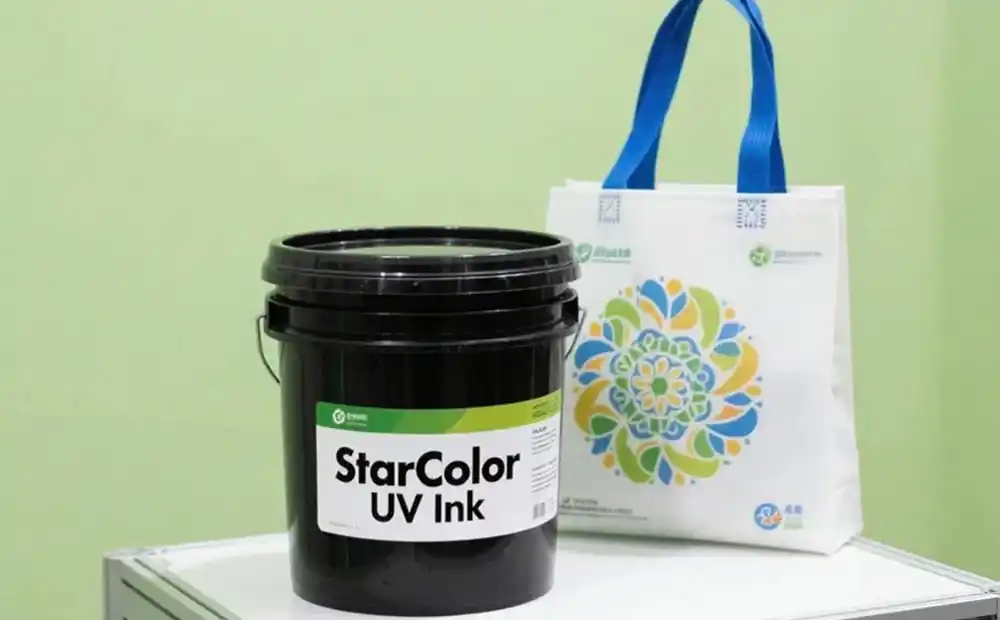Why Is Photoinitiator Selection Critical in Low Migration UV Ink Systems?
Date: Jul 16 2025 From: Star Color Views:
In the printing of packaging for food, pharmaceuticals, and cosmetics,
low-migration UV inks are frequently used. As a core component in the curing of UV inks, photoinitiators not only affect ink performance and migration risks but also determine whether products comply with regulatory requirements.
Photoinitiators: The Core Driver of UV Curing
Photoinitiators act like the "engine" of UV ink curing. By absorbing ultraviolet energy to initiate polymerization reactions, they perform several key functions:
- They trigger the crosslinking of monomers and oligomers, transforming originally independent molecules into a stable network structure. This lays the foundation for the rapid hardening of the ink film, ensuring that printed products achieve the required hardness and strength in a short time to meet subsequent processing and usage needs.
- Modern printing pursues efficiency. The rapid curing reaction initiated by photoinitiators can be adapted to high-speed printing equipment, avoiding production delays caused by slow curing. Moreover, compared with traditional thermal curing, UV curing consumes less energy, conforming to the trend of energy conservation and environmental protection.
Photoinitiators are mainly divided into two categories: free radical type and cationic type:
- Free radical types are mostly used in acrylate systems and are more common in low-migration applications.
- Cationic types are suitable for epoxy systems.
Different types have differences in reaction mechanisms and applicable systems, providing more possibilities for ink formulation design. In low-migration scenarios, free radical systems are widely adopted due to their prominent advantages.
Migration Risks of Photoinitiators
Although photoinitiators play a crucial role, they also pose non-negligible migration risks, which are closely related to their own characteristics:
- Low molecular weight is an important inducement for migration: Small-molecule photoinitiators can easily penetrate the structural gaps of packaging materials and migrate into the packaged products. Packaging materials have a certain barrier property, but they cannot completely prevent migration.
- Volatility also causes migration problems: During or after curing, volatile photoinitiators may volatilize or migrate into and out of the packaging through diffusion. Especially in high-temperature and high-humidity environments, the migration rate of volatile substances accelerates, further increasing the possibility of migration.
- Incomplete reaction is another important source of migration risks: During UV curing, some photoinitiators may not participate in the reaction or only be partially cured. These residual components will seep out from the ink film over time and migrate into the packaging contents.

Selection of Low-Migration Photoinitiators
To meet the regulatory and usage requirements of low-migration UV inks, the selection of photoinitiators needs to consider multiple factors comprehensively:
- High molecular weight (HMW) photoinitiators are preferred, especially polymer types. The high molecular weight molecular structure significantly reduces their permeability in packaging materials, effectively reducing migration. Polymer photoinitiators have longer molecular chains and more complex structures, which have better compatibility with packaging materials, further improving their stability in the ink system and reducing migration risks.
- High reactivity is also an important indicator: Photoinitiators with high reactivity can quickly initiate polymerization reactions in a short time, achieving rapid curing of inks and reducing residual unreacted photoinitiators.
- Low volatility is a key characteristic to ensure low migration performance: Choosing low-volatility photoinitiators can reduce migration caused by volatilization during and after curing. Such photoinitiators are not easy to volatilize at room temperature, can stably exist in the ink system, and reduce the possibility of migration to packaging contents or the external environment.
- Compliance cannot be ignored: Photoinitiators must be included in relevant regulatory approval lists, such as the Swiss Ordinance (RS 817.023.21) and EU 10/2011. Different countries and regions have strict regulations on the migration amount and types of photoinitiators in food, pharmaceutical, and cosmetic packaging materials. Only photoinitiators that meet regulatory requirements can be used to ensure packaging safety.
StarColor's Low-Migration Solutions
StarColor has professional solutions in the field of low-migration UV flexo/screen printing inks. Its products reflect a high degree of professionalism and attention to safety in the selection and application of photoinitiators:
- StarColor's low-migration UV inks use polymer or encapsulated photoinitiators. These photoinitiators have high molecular weight and low migration characteristics, which can effectively reduce migration risks. At the same time, StarColor prohibits the use of substances with high migration risks such as ITX/4-methylbenzophenone, ensuring ink safety from the source.
- Its products comply with multiple international and regional regulatory requirements, such as the Swiss Ordinance, US FDA, and EU food contact regulations, and have passed internal and third-party migration test certifications. This means that StarColor inks have been fully verified in terms of performance and safety, providing reliable protection for indirect food contact packaging and meeting customers' dual needs for high performance and high safety.
As the core of UV ink curing, photoinitiators play a key role in low-migration UV ink systems. They not only determine ink curing performance and production efficiency but also directly relate to packaging safety and compliance.
Selecting suitable photoinitiators requires a precise balance among molecular characteristics, reaction performance, and regulatory compliance. Only through scientific and reasonable selection and formula design can low-migration UV inks meet high-performance requirements while minimizing migration risks, providing a solid guarantee for packaging safety in fields such as food, pharmaceuticals, and cosmetics.
 RU
RU
 EN
EN
 CN
CN

